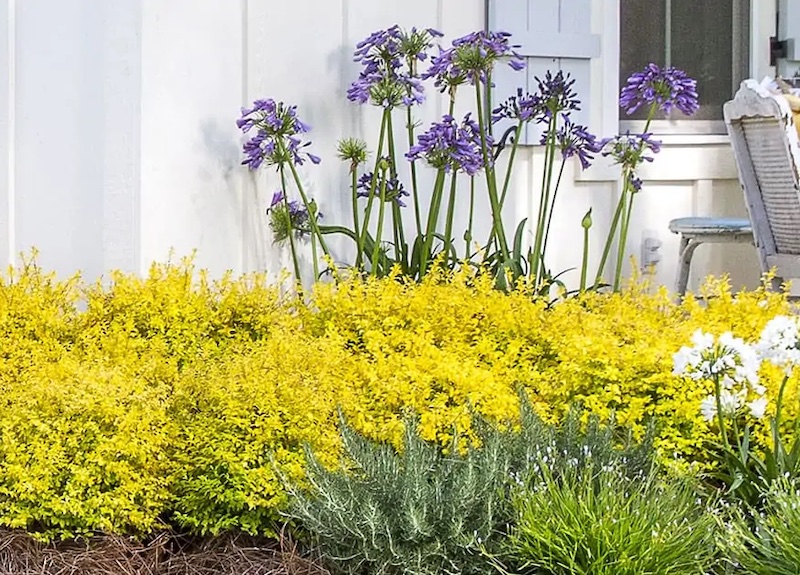Seasonal Agapanthus Treatment: Preparing for Wintertime and Summer
Seasonal Agapanthus Treatment: Preparing for Wintertime and Summer
Blog Article
Mastering the Art of Agapanthus Care: Necessary Actions for Healthy And Balanced Growth and Lively Flowers
In the world of gardening, the growing of agapanthus stands as a fulfilling undertaking for those that seek to nurture these elegant flowering plants. With their striking blossoms and elegant foliage, agapanthus has actually recorded the focus of gardeners worldwide. Nonetheless, attaining ideal development and lively blossoms needs a nuanced technique that includes numerous necessary steps. From selecting the appropriate range to grasping trimming methods, the journey towards growing growing agapanthus plants is multifaceted and holds the vital to opening the complete potential of these organic gems.

Selecting the Right Agapanthus Range

When picking the ideal Agapanthus range for your yard, think about aspects such as climate viability, flower shade, and development behavior. Furthermore, consider the climate in your region to make sure the Agapanthus selection you choose can thrive in your specific problems. Recognizing the growth behavior of various Agapanthus ranges is critical for correct positioning within your yard.
Perfect Growing Problems
Thinking about the optimum ecological demands is vital for successful Agapanthus farming. Agapanthus plants are sensitive to cool temperature levels and ought to be shielded from frost during wintertime months.
To make sure healthy development and lively blooms, plant Agapanthus bulbs at a deepness of concerning 2-4 inches and room them 8-12 inches apart. Mulching around the base of the plants aids keep moisture and reduces weed growth.
Watering and Feeding Tips
Maintaining proper moisture degrees and offering necessary nutrients are key elements in the care routine for Agapanthus plants. When it comes to watering Agapanthus, it is critical to strike a balance. These plants like regularly wet dirt but are prone to root rot if overwatered.
Fertilizing Agapanthus is important for advertising healthy growth and respected flowers. Apply a well balanced fertilizer, such as a 10-10-10 formula, in the early spring as new development emerges. By complying with these watering and fertilizing ideas, you can guarantee your Agapanthus plants flourish and create dynamic, resilient flowers.
Pruning Methods for Agapanthus
Pruning Agapanthus plants at the proper times and with correct strategies is vital for preserving their health and promoting optimum growth and blooming. The suitable time to trim Agapanthus is in late winter or early springtime before brand-new growth arises.
For flowered stems, wait till the blossoms have actually perished and afterwards cut them back to the base. This not only cleans the plant's look however likewise encourages the growth of brand-new blossom buds. Deadheading spent blossoms can additionally reroute the plant's power into creating even more blooms instead than establishing seeds. However, if you intend to accumulate seeds for proliferation, leave some blossoms to completely dry and mature on the plant.
Remember to utilize clean, sharp tools to make exact cuts and lower the risk of introducing conditions. Agapanthus. Regular pruning will help maintain your Agapanthus looking healthy and balanced and cool while guaranteeing an abundant display screen of gorgeous flowers
Managing Typical Insects and Diseases
After ensuring correct trimming techniques for Agapanthus, it is vital to address usual parasites and conditions that can impact the health and wellness and vigor of these plants. Agapanthus plants are usually hardy but can still come down with specific issues. One common insect that affects Agapanthus is the Agapanthus gall midget. This little, orange fly lays its eggs in the foliage, resulting in distorted development and blossom buds that fall short to open. To combat this pest, prune and ruin any affected plant parts and take into consideration Check This Out making use of insecticidal soap.
In addition, Agapanthus plants can experience from origin rot if they are planted in poorly draining soil. By being attentive and taking punctual activity against parasites and conditions, you can aid your Agapanthus plants thrive and produce vibrant flowers. Agapanthus.
:strip_icc()/agapanthus-africanus-b959396b-5696f86e059c46f299d1834ba687c6eb.jpg)
Verdict
Finally, mastering the art of agapanthus treatment includes picking the appropriate selection, providing perfect planting problems, correct watering and fertilizing, proper trimming methods, and dealing with typical pests and conditions. By adhering to these important steps, you can make sure this article healthy development and vivid flowers for your agapanthus plants. Bear in mind to on a regular basis keep track of and maintain your plants to advertise their general wellness and durability.
To ensure healthy and balanced development and lively flowers, plant Agapanthus light bulbs at a deepness of regarding 2-4 inches and space them 8-12 inches apart. By following these watering and fertilizing suggestions, you can guarantee your Agapanthus read this article plants flourish and generate vibrant, long-lasting blossoms.
One usual insect that influences Agapanthus is the Agapanthus gall midget. Additionally, Agapanthus plants can suffer from origin rot if they are planted in poorly draining pipes dirt. By adhering to these vital steps, you can make sure healthy development and dynamic blossoms for your agapanthus plants.
Report this page